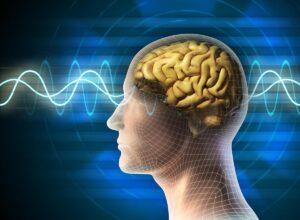GS-3: Science and Technology

Key Points:
- Indian-origin scientist Nikhilesh Natraj and the UCSF team developed a Brain-Computer Interface (BCI) enabling a paralyzed individual to control a robotic arm through imagined movements.
- The system operated reliably for months with minimal recalibration, a significant advancement in assistive technology.
- Sensors detect neural signals from the brain’s motor centers, translating imagined actions into robotic movements.
- Enabled practical tasks like opening cabinets and using dispensers, aiding independent living.
In-Depth Analysis: BCI Functionality:
- Sensors placed on the brain’s surface (not implanted) capture activity during imagined movements.
- AI algorithms interpret these signals, learning motor intent over time.
Scientific Breakthrough:
- Addressed signal drift—daily variations in brain signals—using high-dimensional sensor data to stabilize the BCI pipeline.
Practical Applications:
- The participant trained to imagine small movements, allowing the robotic arm to perform tasks like grasping objects and operating dispensers.
Future Prospects and Challenges:
- Needs further development for dynamic environments and complex sensory scenarios.
- Requires clinical trials and cost reductions for broader accessibility.
Scientific/Technical Terms:
- Brain-Computer Interface (BCI): A system linking neural activity to external devices.
- Signal Drift: Daily changes in brain signals causing BCI instability.
- Neural Signal Decoding: Using machine learning to map brain activity to control outputs.
Significance:
- A milestone in neuro-assistive technology for paralysis and neurodegenerative conditions.
- Showcases India’s role in global scientific innovation.
- Raises ethical, medical, and regulatory considerations for AI-neurophysiology integration.




